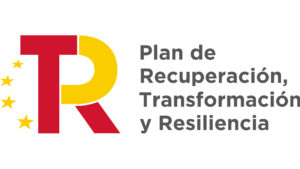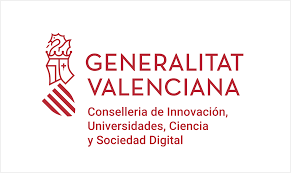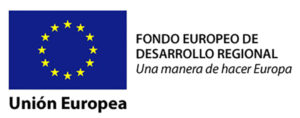Saltar al contenido
2021
The new application technologies envisioned for the next decade make that technical performance requirements of 6G must be higher than those currently achieved by 5G. Requirements of large bandwidths (to be defined, but higher than 400 MHz), high peak data rate (more than 1 Tbps), high user experience rate (on the order of 1 Gbps), density of connected devices (107 devices/km2) and user plane latency (from 25 µs to 1 ms), to mention the most representative, require technical challenges at the PHY layer, but also new improvements in the core network. To overcome these technical challenges, 6G wireless channels need to be thoroughly studied, since the knowledge of the channel is the basis for designing, optimizing and evaluating the performance of any wireless system. As in 5G, the definition of 6G once again represents a challenge in channel measurements and modelling. The introduction of new enabling technologies, e.g., very large arrays and distributed arrays, and large bandwidths require more complete and robust channel models.
Based on the starting hypothesis, the objective of the project is to develop wireless channel models and generate the channel knowledge required to the definition, standardization, and deployment of the future 6G systems. As indicated in the future vision of channel models in Section 1, important contributions are expected to be made in the three following challenges:
- Definition of a new taxonomy of radio channels.
- Inclusion of very large MIMO arrays and distributed MIMO arrays in the wireless channel model.
- Development of hybrid Quasi-Deterministic channel models.
To achieve the objective of the project, we define a methodology that combines channel measurements, channel simulations, and experimental and theoretical channel modelling.

2020
In the coming years, the implementation of broadband communications systems in the millimeter band with global coverage will acquire special relevance. It aims at a convergence of the fixed and mobile services to offer a universal quality of service similar to that of the already mature fiber optic networks. The imminent deployment of 5G networks promises to provide broadband service in sufficiently populated areas, the rest being covered by next-generation communications satellites. The latter allow uninterrupted connection in means of transport (trains, ships, planes) and serve as backup in areas affected by natural disasters or conflict and / or remote zones.
The development of antennas for satellite communications in Ka-band, valid for trains or airplanes, represents a great technological challenge that has not yet been effectively solved by the industry. Very low profile antennas must meet very demanding specifications in terms of gain, secondary lobes, high purity circular polarization, and dual band operation. To these requirements must be added a high degree of reconfigurability, since they must be able to switch polarization in addition to pointing the beam dynamically towards the satellite to compensate for the movement. Also, the deployment of the emerging 5G demands reconfigurable multibeam antennas capable of serving several users simultaneously.
This project addresses the development of new antenna concepts in the millimeter band capable of meeting the demanding needs of these communication systems. Special attention is paid to highly efficient antennas, dual in polarization and / or frequency and capable of reconfiguring their radiation pattern. The control of beam pointing, maintaining the flat character of the antenna, is one of the main objectives of the project. The implementation of a low-cost alternative mechanism to electronic phase shifters opens the door to the development of competitive low-profile terminals. Innovative solutions capable of generating several simultaneous directing beams are also implemented, valid for multi-user and/or multi-path MIMO communications.

2018
The future traffic demands will require the deployment of new communication systems with faster as well as more efficient and reliable connections. The new 5G systems will represent a significant improvement over 4G systems, increasing the speed of LTE-Advanced by 1000. To increase channel capacity, the distribution of ultra-dense networks of base stations, the use of new frequency bands, such as millimeter-wave (mmWave), and the combination of beamforming techniques and advanced MIMO systems arise as a requirement. In this scenario, the knowledge of the radio channel holds the key to define the standard, select new frequency bands, and optimize the deployment of the network infrastructure.
With the aim of studying the radio channel properties for the new 5G scenarios, the project ICAR5G started in 2018. The objectives of this project are to generate new radio channel models based on extensive measurement campaigns, complementing the actions being already developed in other projects, to evaluate the different technologies to be implemented in the radio interface and to optimize the deployment of base stations. In addition, this knowledge is intended to assist decision-making in the process of reorganization and assignment of frequencies in future 5G systems by the standardization and radio spectrum management bodies.
Up to now, extensive channel measurements in underground and indoor office environments have been collected using a novel channel sounder implemented in the frequency domain and based on the use of radio over fiber (RoF) links with omnidirectional antennas. From the channel measurements, realistic channel models have been analyzed and developed in the potential frequency bands to deploy the future 5G systems, with special attention to mmWave, e.g., 26, 28, 38 and 60 GHz. These models have been compared with ray-tracing techniques to develop diffuse scattering models. The performance of multiuser MIMO techniques, that can be introduced into 5G systems, have also been investigated in these particular environments from the channel models.

2017
New antenna concepts and topologies for Ka-band terminals (in the range from 19 to 31 GHz) for satellite communications were explored in this project, targeting at reducing terminal volume and weight so that they may be suitable for on-the-move applications. The proposal was focused on the antenna panel, probably the most complex part of the whole terminal: the mobile terminal comprises TX and an RX antennas operating at well-separated bands (30 GHz and 20 GHz, respectively).
Furthermore, being a cellular service, the mobile terminal must be capable of switching polarization during handover from one spotbeam to the next. Therefore, the project has faced the design of so-called dual antennas sharing the same panel for both polarizations and/or both frequency bands, so that overall surface reserved to the antenna is lower. In addition, the project has studied new beam pointing mechanisms so that the antenna may remain static while the main beam moves tracking the satellite.
During the last year, main effort has been devoted to mechanically-scanned-beam antennas, giving rise to a new concept of mechanical phase shifter which has been experimentally verified. This concept has been subject to a patent and a journal paper.

The main goal of this project was the design of new types of antennas for the 5G generation of mobile communications. This project has focused on three specific areas in the microwave (below 6 GHz) and mm-wave bands:
- On-body sensing applications: A computational modelling of the human body has been developed in the band from 1 to 6 GHz using an integral equation approach and several multimode antennas for on-body sensing applications have been analyzed and designed.
- Reconfigurable mm-wave antenna design for mobile devices: These antennas have been designed using LTCC (Low Temperature Co-fired Ceramics) fabrication technology available at GRE premises.
Reconfigurable multibeam mm-wave 5G indoor base station design: Different metallic planar lens antennas based on non-periodic frequency selective surfaces have been designed for the frequency range of 20-30 GHz, and a prototype has been fabricated and tested at GRE premises. Moreover, a cavity-backed antenna fed at four different points has been proposed for 5G femto-cells. The prototype of this antenna has shown measured results with an excellent performance for indoor environments.

2020
The main goal of this project is to conceive and develop a new generation of reconfigurable antennas operating into the microwave and millimeter frequency (x-Wave) domains of the electromagnetic spectrum, to face the challenges and requirements of incoming applications. Specifically, the project will focus on various areas:
- Development of an integral equation approach for computational modelling of dielectric mediums. The code presents high efficiency, and it has direct application to the study of dielectric lenses.
- Design of multibeam and mutimode antennas for the sub-6 GHz band, using the Theory of Characteristic Modes. Different antenna designs for 5G base stations with MIMO capability have been developed for the sub-6 GHz band, based on the combined use of multiple feed points and resonant cavities of arbitrary shape.
- Design of a time-multiplexed array, according to new standards for determining the angle of arrival of the waves. Antenna arrays have been developed for angle-of-arrival detection applications and digital beamforming at the LTE-A (1.8 GHz) and 5G (2.6 GHz) bands.
- Fabrication and measurement of a set of LTCC antennas with ceramic materials for the sub-6 GHz band.
Different models of chip-type antennas have been manufactured with ceramic substrates using Low Temperature CoFired Ceramic (LTCC) technology. The new development features a compact size, good efficiency, does not require a "clearance" zone to be integrated into the PCB, and does not detune when installed on IoT devices and sensors of different sizes.
5. Fabrication and measurements of a prototype of a reconfigurable multibeam mm-wave indoor low-cost for 5G and beyond base station, based on metallic planar lenses. A multi-beam multi-feed antenna prototype based on a low-cost flat metallic lens has been fabricated and characterized at UPV. In order to obtain a reconfigurable beam antenna for applications in the 5G millimeter wave band, the focal point is controlled by feeding the lens in different positions. Channel measurement are being performed at UPCT, yielding good results.

2021
The objective of the project is the design of artificial materials (metamaterials or metasurfaces) aimed to exhibit singular or unusual properties when interacting with electromagnetic waves (e.g., reflections, transmissions, and unusual dispersion of the waves). The materials will be designed to operate at the mm-Wave and sub-THz band and will be created using an in-house-developed advanced mathematical optimization code, which will be able to optimize the position of microscopic elements embedded in a macroscopic substrate. These novel materials will be fabricated and tested in the APL facilities at iTEAM. The materials will allow to gain a greater control of the environment of the radio signal propagation, being the objective to create a smart environment around the user for the 6G communication signal propagation.


| With this proposal we seek the support to further develop and consolidate a set of disruptive photonic technologies in which the Photonics Research labs (PRL) has produced pioneering and world-class results and which are called to play a starring role in enabling future emerging applications in communications, sensing, biomedicine, security, industry 4.0, food and agriculture, computing, transportation. These share common needs in flexibility, broadband operation, low power consumption and miniaturized footprint. The project aims to 1) further develop core knowledge in: a) programmable integrated photonics, b) Specialty SDM fibers exploiting spatial multiplexing for signal processing and sensing, c) Hybrid optical wireless-millimeter wave access networks and d) Hybrid active/passive photonic integration, 3) Train a new generation of researchers specialized in them and 3) Provide the basis for future transfer of these technologies to the industrial sector.. |
| Proyecto PROMETEO/2021/015 del programa PROMETEO para grupos de investigación de excelencia financiado por la Conselleria d’educació, investigació, cultura i esport |

| Este proyecto consiguió ampliar, mejorar y fortalecer al Photonics Research Labs, grupo de referencia internacional en investigación dentro del campo de la Fotónica, a través de la adquisición de instrumentación y equipamiento inventariable de última generación en las áreas de la Fotónica de Microondas y de la Fotónica Programable: - Adquisición de capacidades de encapsulamiento de chips fotónicos a través de la incorporación de una máquina multifuncional, modular y ampliable diseñada para entorno de laboratorio de I+D, capaz de llevar a cabo, de forma automática, las diferentes tareas necesarias en el ensamblaje, preparación y encapsulamiento óptico, eléctrico, térmico y mecánico de circuitos fotónicos integrados de complejidad baja e intermedia. La opción modular permite un coste más reducido y la posibilidad de ampliaciones futuras si fuera necesario mediante la adquisición de nuevas capacidades implementadas por módulos futuros. Esta máquina, permite eliminar el límite tecnológico en diseños de chips escalables con una alta densidad de puertos ópticos y electrónicos, habilitando diseños disruptivos y con un amplio carácter innovador. - Adquisición de la capacidad de escribir variaciones periódicas y aperiódicas en todo tipo de guías circulares (fibras ópticas) y guías planas mediante la incorporación de un láser de femtosegundos de alta energía de pulso que genera un proceso de dos fotones y permite la variación de la estructura de la guía en tamaños nanométricos. Para ello, es necesario acompañar el láser de un sistema de alineamiento de ultra-precisión en los tres ejes con resoluciones de nanómetros, que tenga la flexibilidad de generar estructuras complejas en las guías y que permita posibles ampliaciones en un futuro cuando sea necesaria la evolución. Dado que son dos elementos que pertenecen a ámbitos industriales diferentes, se realizó la adquisición por separado para finalmente integrarlos. - Adquisición de la capacidad de medida y caracterización espectral de redes ópticas que emplean múltiples canales en nuevas y prometedoras ventanas ópticas, bien en términos de eficiencia energética (visible) o baja latencia y alta capacidad (banda de 2 micras). |
| Proyecto IDIFEDER/2021/050 cofinanciado por la Unión Europea a través del Programa Operativo del Fondo Europeo de Desarrollo Regional (FEDER) de la Comunitat Valenciana 2021-2027 |


2020
| Este proyecto consiguió ampliar, mejorar y fortalecer al PRL en particular y al instituto iTEAM en general a través de la adquisición de instrumentación y equipamiento inventariable de última generación en el campo de la fotónica de microondas y la Fotónica Programable:
- Adquisición de un osciloscopio en tiempo real para medida de señales en la banda de 0 a 70 GHz, ampliable hasta 110 GHz. Este equipamiento nos está permitiendo realizar medidas en el dominio del tiempo de pulsos y señales de radiofrecuencia de hasta 70 GHz, complementando al adquirido anteriormente para realizar medidas en el dominio de la frecuencia. Se emplea tanto en caracterización temporal de chips fotónicos programables como en la de componentes basados en fibra especiales MCF y FMF que procesan señales de entrada de radiofrecuencia e inalámbricas de alta velocidad.
- Ampliación de las capacidades de medida del laboratorio de fotónica integrada programable a través de la adquisición de equipamiento nano-posicionador motorizado programable que permita seis grados de libertad (3 de posición y 3 angulares) para medida de chips individuales con el objetivo de completar el equipamiento del puesto de trabajo de medida de chips programables en tecnología de silicio.
- Adquisición de una estación de trabajo para fusión y el conformado de vidrio, la cual ha permitido ampliar las capacidades del laboratorio de fibras ópticas del PRL habilitando la realización de empalmes entre diversos tipos de fibras ópticas, considerando tanto fibras estándar como fibras especiales (multinúcleo y de pocos modos); la producción de elementos de adaptación modal y geométrica (Tapers) entre núcleos de fibras diferentes; la escritura de lentes esféricas en extremos de las fibras y, en general, la realización de elementos combinadores (separadores) de señales a la entrada (salida) de fibras ópticas arbitrarias. |
| Proyecto IDIFEDER/2020/032 cofinanciado por la Unión Europea a través del Programa Operativo del Fondo Europeo de Desarrollo Regional (FEDER) de la Comunitat Valenciana 2014-2020 |


2021
2021-2024
| In this project we intend to develop new and disruptive devices based on inter-core crosstalk produced by the inscription of fiber diffraction gratings in the cores of a Multicore Optical Fiber (MCF) to improve the performance of Space Division Multiplexing (SDM) amplifiers, Reconfigurable Add-Drop Optical Multiplexers and optical sensors.
Tilted Fibre Bragg Gratings (TFBG) and Long Period Grating (LPG) in MCFs have shown that it is possible to deliberately and locally increase inter-core crosstalk in MCFs to transfer light from one core to another in a specific wavelength range. This project will study the optimization of the properties of these gratings and the modification of the fiber structure to increase this effect and proposes novel schemes to use this phenomenon in the design of optical devices for SDM networks and optical sensors. In particular, we propose to use inter-core crosstalk to implement a new injection scheme of the pumping signal in a distributed way. This scheme can contribute to improve the performance of SDM amplifiers, avoid current limitations, and increase the maximum detection range of the distributed optical sensors. Another application of this technology that will be explored in this project is the use of inter-core crosstalk as a mechanism to implement distributed optical sensors that can simplify the current interrogation schemes. |
| PID2020-120071RJ-I00 Project funded by MCIN/AEI/10.13039/501100011033. |

| Firstly, SYNERGY seeks a novel Spatial Division Multiplexing (SDM) fiber solution for a better optical True-Time Delay Lines (TTDL) performance for microwave signal processing in terms of RF bandwidth, chromatic dispersion range, number of signal samples and robustness against fabrication errors, going beyond our preliminary demonstrations in the field. Furthermore, it will explore the implementation of different optical signal processing functionalities, such as optical sampling or parallel chromatic dispersion compensation. Secondly, SYNERGY project aims at pioneering and developing innovative optical technologies based on specialty SDM fibers to revolutionize the future display of broadband fibers‐wireless communication scenarios. More specifically, the general goal is to exploit the inherent parallelism of multicore fibers, few‐mode fibers and combination of both to implement a variety of signal processing and multiparameter sensing applications featuring unique properties beyond the state of the art in terms of compactness, lightness, system stability, power efficiency, versatility and record bandwidth. Finally, SYNERGY will bring the chance to develop sensors not only with commercially available fibers but also with specialty ones, improving the sensor sensibility and providing novel techniques of interrogation for better requirement benchmarking. We want to explore the incorporation of specially designed cavities not only to use the reflected light, but also to exploit the benefits of retrieving the phase of the signal, while providing a robust design against external interferences. We plan as well to develop structures that will enhance the interaction with the external medium and postprocess the fibers with different coatings and terminations. |
| PID2020-118310RB-I00 Project funded by MCIN/AEI/10.13039/501100011033. |







